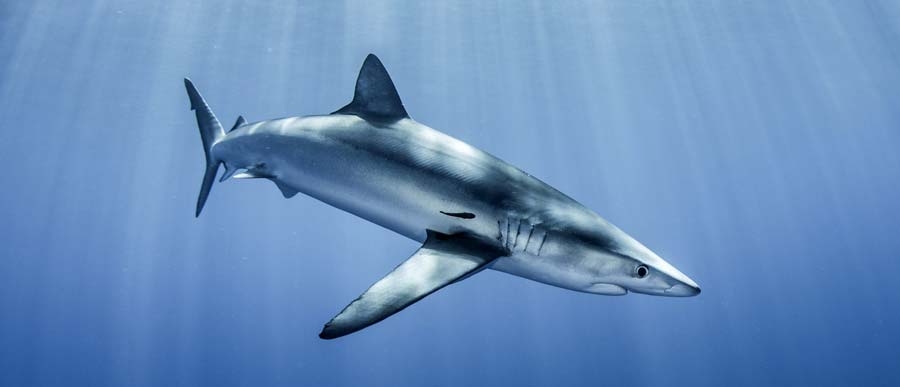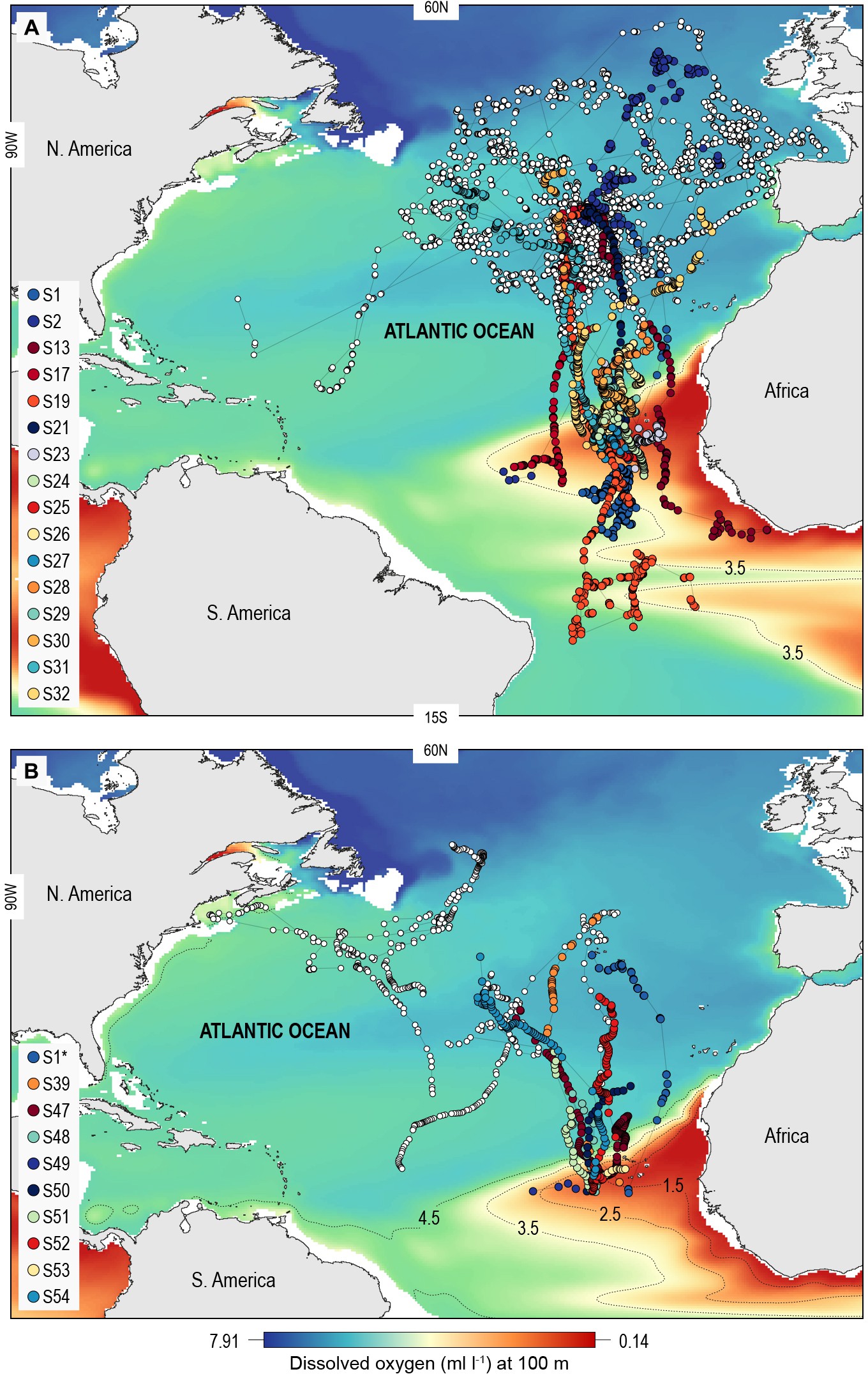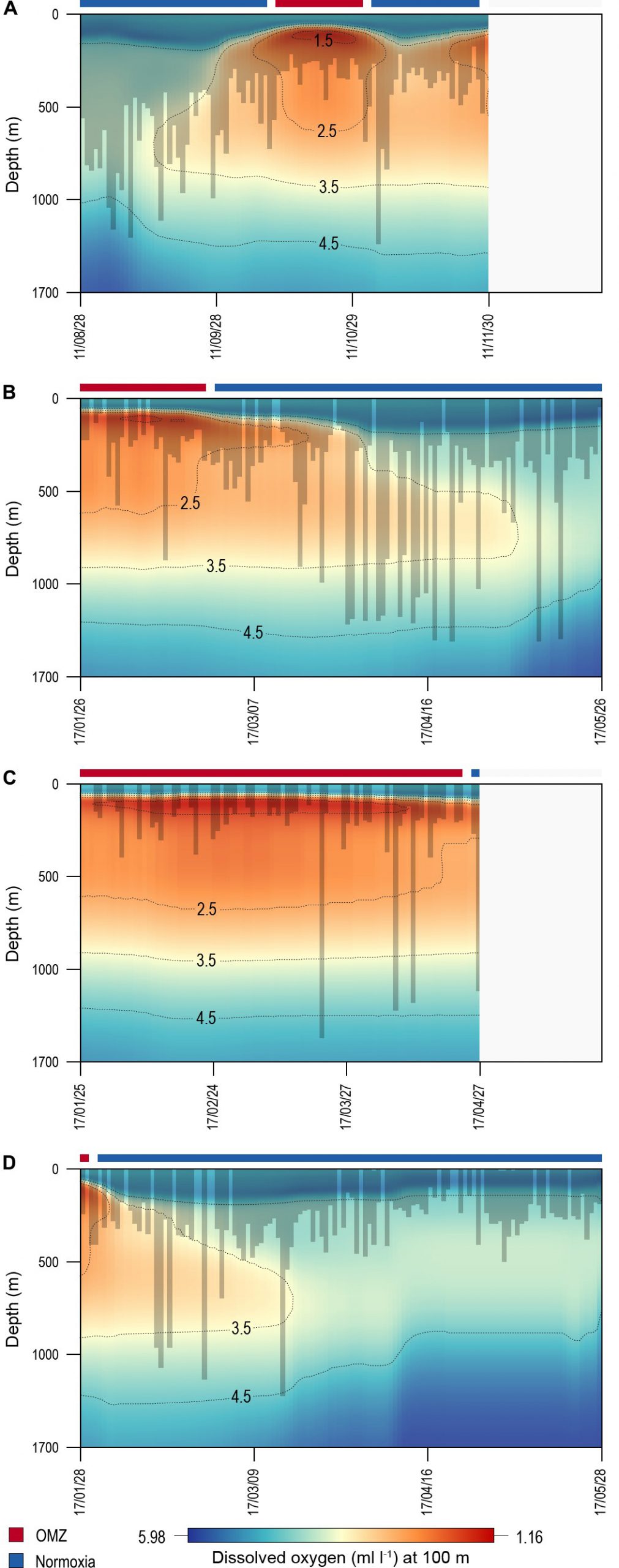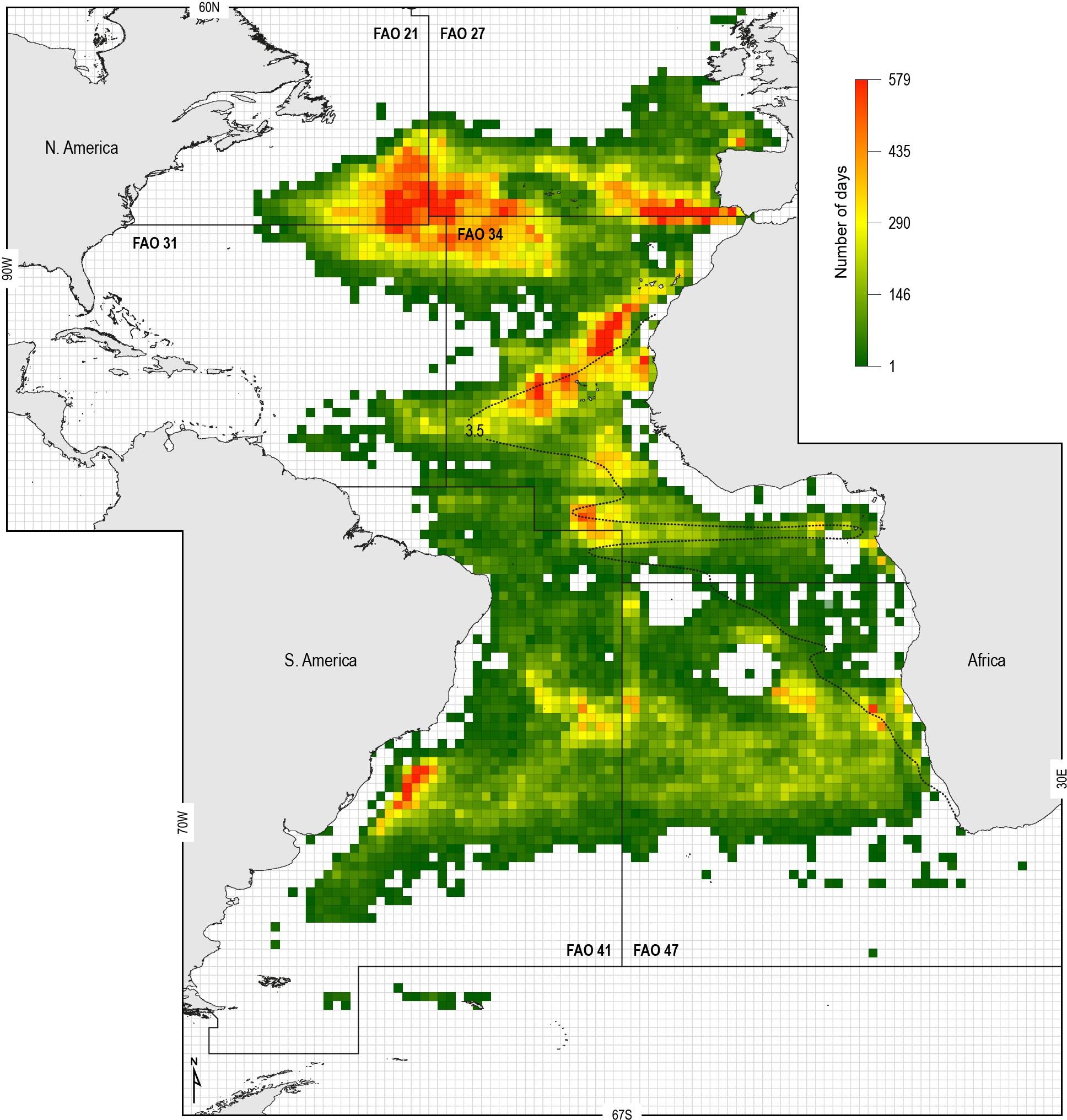← Back
Less oxygen in the ocean may mean more threats from fisheries for blue sharks

Blue sharks, as many pelagic species of sharks, are often found in the surface layers above the existing Oxygen Minimum Zones. Those layers might shrink due to climate change and the expansion of the oxygen-poor areas underneath, thus leading to a concentration of shark and their higher vulnerability to fishing.
One of the predicted effects of climate change is the expansion of the existing oxygen-poor areas in the oceans. Fish, sharks included, do need oxygen, and pelagic sharks especially so.
However warming waters has fewer capability to dissolve this oxygen. Thus, climate change may modify the fish and shark distribution in the ocean, with potential impact on the different species.
Pelagic sharks are quite often found in the surface layers above the existing Oxygen Minimum Zones. The expansion of such zones might shrink the shark habitat. One of the consequences could be a higher vulnerability to fishery capture or bycatch.
Blue sharks tracked with respect to dissolved oxygen
Blue shark (Prionace glauca) is the widest ranging pelagic shark (see also The SELPAL Project which included blue shark tracking). It is highly migratory, and it is also the shark most frequently caught by pelagic longline fisheries worldwide.
The species is classified as Near Threatened globally. For long there has been no restriction in international waters on its capture. Recently, though, a total allowable catches has been established in the North Atlantic.
More info about animal tracking with Argos

Movements of blue sharks in relation to the eastern tropical Atlantic oxygen minimum zone. Sharks were tracked with (A) real-time transmitters and (B) pop-off satellite-linked archival transmitters overlaid on modelled dissolved oxygen concentrations (at 100 m). Colour of the trajectories differentiate the individuals (from [Vedor et al., 2021])
Fifty-five adult and sub-adult blue sharks were equipped in the North Atlantic Ocean.
They had either a position-only satellite transmitter or a satellite-linked depth and temperature-recording tag, both transmitted by Argos.
The position-only Argos transmitters were used to determine the horizontal movements and space utilisation of sharks in real-time.
The recording tags recorded, and transmitted at release the swimming depths.
All these information were studied in relation with modelled dissolved oxygen and other environmental variables in an Oxygen-Minimum Zone (Eastern Tropical North Atlantic Oxygen-Minimum Zone, off Cape Verde) and adjacent areas.

Example of diving patterns of four different sharks overlaid on dissolved oxygen concentration (from [Vedor et al., 2021])
Analysis in three dimensions of blue shark behaviours
Analysis of horizontal movements shows that the sharks are spending significantly more time above the Oxygen Minimum Zone than would be the case randomly.
The diving patterns were also markedly different. A shift to shallower diving depths is observed in the records over the Oxygen-Minimum Zone (maximum daily dives 200-520 m, mean 754 m) compared to “normal” waters (maximum daily dives 500-1400 m, mean 1250 m).
Moreover, the few dives going down to and/or through the hypoxic layers were of short duration.
The net primary production is higher over the East Tropical Atlantic Oxygen-Minimum Zone, in relation with increased stratification and warmer sea surface temperatures. The preference of the shark for this area may be related, following the modelling made for this study.
Fishing efforts and blue shark catches
The geographic repartition of fishing efforts from pelagic longliner shows also a higher intensity in waters above the eastern Atlantic Oxygen-Minimum Zones (both North and South Atlantic ones), especially at their boundaries.
Thus, the fishing effort and the shark habitat concentrate on the same areas.
Indeed, examining the fishing boats’ logbooks, it appears that their catch of blue sharks (per unit effort) increased most where dissolved oxygen at 100 m was generally decreasing through the North Atlantic Oxygen-Minimum Zone.

Map of fishing effort of pelagic longline vessel fleets. Black dotted line: oxycline (3.5 ml O2/litre at 100 m) used to denote the positions of the North and South Atlantic hypoxic zones (from [Vedor et al., 2021])
Less oxygen leads to blue shark habitat compression over fishing grounds
The study thus shows that blue sharks should tend to concentrate even more, using the even upper-layer above Oxygen-Minimum Zone to avoid too-low dissolved oxygen rates.
As fishing efforts is already higher over those zones (including blue shark catches), the sharks should be even more vulnerable to this threat. More effective existing shark catch control regulations should be envisioned including in the international waters.
The settling of high-seas Large Marine Protected Areas around Oxygen-Minimum Zones might be a necessary measure to conserve shark populations
Reference and links
- Marisa Vedor, Nuno Queiroz, Gonzalo Mucientes, Ana Couto, Ivo da Costa, Antonio dos Santos, Frederic Vandeperre, Jorge Fontes, Pedro Afonso, Rui Rosa, Nicolas E Humphries, David W Sims, 2021: Climate-driven deoxygenation elevates fishing vulnerability for the ocean’s widest ranging shark, eLife;10:e62508. DOI: https://doi.org/10.7554/eLife.62508
- https://www.globalsharkmovement.org/, and in particular the research section https://www.globalsharkmovement.org/research/
- https://elifesciences.org/podcast/episode72#1340 (podcast)
Main photo: a blue shark (credit Nuno Vasco Rodrigues)
